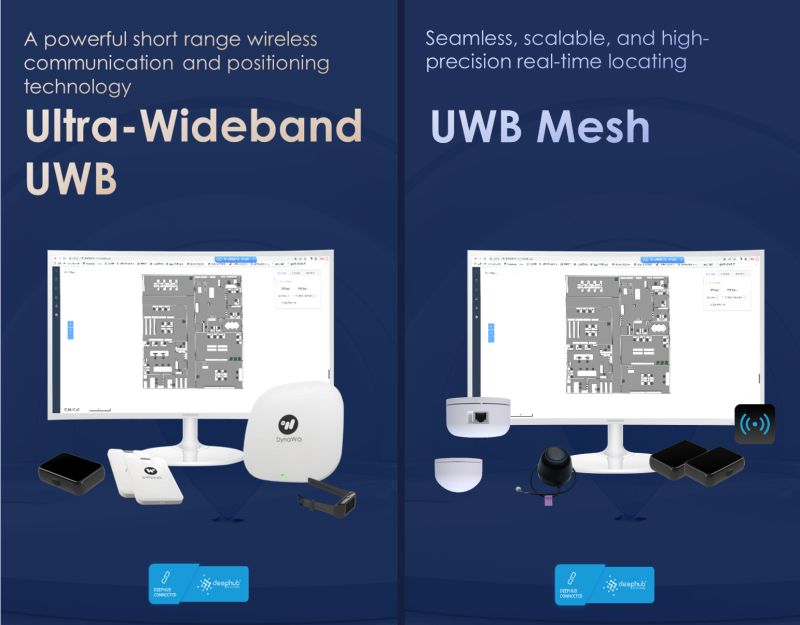At DynaWo, one of the first questions we explore in RTLS design is whether a system is better served by classic UWB (TDOA) or UWB Mesh.
Both architectures deliver centimeter-level precision, but the differences in infrastructure, performance, and scalability have a major impact on project outcomes.
Classic UWB (TDOA) uses Time Difference of Arrival methods. Anchors are synchronized via a wired Ethernet / PoE backbone, ensuring tightly controlled timing and deterministic tracking. It is ideal for precision-driven, real-time environments, such as:
- Automotive production lines
- Robotics and AGV fleets
- Aerospace assembly
- Cleanroom manufacturing
A key tradeoff: Classic UWB requires wired infrastructure, which results in:
- Higher upfront installation costs
- More complex retrofitting in brownfield sites
- Less flexibility for layout changes or expansions
When absolute repeatability and fast update rates are required — such as driving business logic in MES/WMS platforms or real-time control loops — Classic UWB remains the gold standard.
UWB Mesh, by contrast, eliminates cabling requirements. Anchors are simply a wireless, battery-driven device which can support up to 7 years product life. The system can be extended by simply adding nodes.
Advantages include:
- Fast, cable-free deployment
- Scalability — coverage can expand with minimal disruption
- Adaptive layouts — ideal for dynamic facilities
UWB Mesh is particularly effective in:
- Legacy buildings
- Hospitals and healthcare environments
- Multi-story facilities
- Logistics centers and warehouses
- Construction sites and dynamic work zones
We design RTLS systems to strike the right balance between performance, cost, infrastructure simplicity, and future scalability. We ensure all our systems are omlox / DeepHub compatible per industry standards — and are always tailored to each client’s operational environment.
If you’re planning an RTLS deployment and want to design it right from the start — with clear tradeoffs and proven architecture patterns — we’re always happy to share real-world insights and help you make the best choice for your business.

